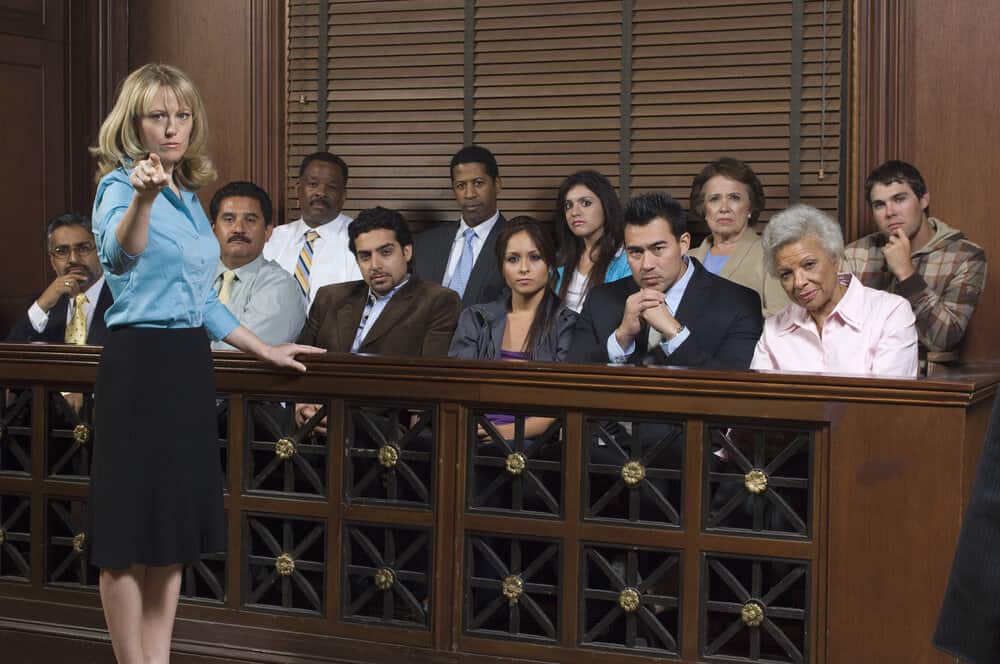Adapt your legal presentations for juries and judges

[ad_1]
Navigating the courtroom is like a well-choreographed dance. Understanding your audience is crucial. To help demystify this art, we’ve brought together the expertise of Michael Callahan and Riley Beam. They made clear the stark differences between addressing a jury and a judge. Let’s dissect their visions and pepper some of us.
Michael Callahan talks about adapting your presentation style to your audience
Michael CallahanFounder and Director, Callahan Law Firmoffers a nuanced perspective:
“When addressing the jury, I emphasize simplifying complex legal concepts and developing emotional narratives. Often, jurors are receptive to narratives that connect the facts to their personal experiences.
“In contrast, when appearing before a judge, I emphasize careful legal arguments, statutes, and case law. Judges are trained to analyze legal issues carefully, so my preparation entails a more thorough examination of legal nuances.”
- take usThe key here is adaptability. before the jury, You are not just a lawyer but a storyteller. before JudgeYou are a legal scholar.
- Tips and strategies:
- For the jury, use relevant analogies and simple language.
- Dive into the laws and precedents so that judges can build a strong case.
- Key takeawaysKnow your audience and tailor your approach for maximum impact.
- Tips and strategies:
Riley Beam talks about patience and conviction in jury trials
Riley PymAdministrative lawyer, Douglas R. Pym, PA Dives into the attributes needed for a successful jury presentation:
“The first element is patience. A jury is less familiar with the law than a judge. We must be patient enough to explain terms and avoid confusing legal terms. Instead, we create images and stories to get a point across. Our arguments are engaging and informative, yet clear and concise.
“The second element is conviction. A committed presentation of guilt shows the jury how much we care. We may fail to inspire the jury to feel about our clients if we present only the facts and details. When we demonstrate guilt and help the jury understand why justice must be done, it becomes easier to get On every member on our side.
- take usIt is not only about the law; It is about human contact. Empathy, clarity, and a true belief in your case can affect a jury as much as the facts.
- Tips and strategies:
- Use visual aids such as slides or props to boost your score.
- Show persuasion through your tone of voice, facial expressions, and body language.
- Key takeawaysMastering the art of patience and conviction can make your case relevant and persuasive to a jury.
- Tips and strategies:
Final Thoughts: The Art of Courtroom Adaptability
In the courtroom, the effectiveness of your presentation can depend on your ability to adapt to your audience. a Jury He must feel your sincerity and understand your client’s position, while the judge requires a rigorous and well-thought-out argument. Being able to switch between these two styles isn’t just an art; It is a necessity for legal success.
Frequently Asked Questions: Navigate your legal presentations
What is the most important factor when presenting to a jury?
Empathy and clarity top the list. You have to simplify complex legal jargon and connect the jury to your customer experience.
How should I prepare differently for a judge than for a jury?
For a judge, focus on the legal details. They are well versed in the law, so delve into the laws, case precedents, and legal arguments.
Can visual aids be used in both cases?
Yes, but it should be designed. For a jury, use visuals to simplify and humanize. For judges, charts or charts may be used to illustrate complex arguments.
What role does emotion play in these performances?
Emotion plays a larger role in a jury, where conviction and emotion can be persuasive. For judges, emotion is less powerful than a strong and justified legal argument.
How long should a jury vs judge presentation take?
There is no hard and fast rule, but juries generally benefit from short, engaging presentations. However, judges may expect a more in-depth exploration of legal issues.
Should I avoid legal jargon altogether when speaking to a jury?
Not quite, but minimize it. If you must use legal terminology, explain it clearly so that the jury will understand it.
Is it useful to bring in expert witnesses?
Especially in cases where specialized knowledge is required. However, make sure they can simply communicate complex ideas to the jury.
How can I show conviction without sounding overly emotional or biased?
It’s a fine line to walk. The key is to show that you believe in your client’s cause without using theatrics. Let your arguments prove your conviction.
What is the most common mistake lawyers make in their presentations?
Inability to adapt. Many lawyers get so deep into the legal details that they forget to communicate on a human level, which is especially important to them. Trials by jury.
Any tips on keeping the jury engaged?
Change your tone, use narrative elements, use visual elements. Also remember that speed is crucial, so don’t rush, but don’t be late either.
These FAQs should provide a solid starting point for any attorney looking to hone their courtroom presentation skills. Adaptability is, after all, essential in the legal arena.
[ad_2]
Source link






